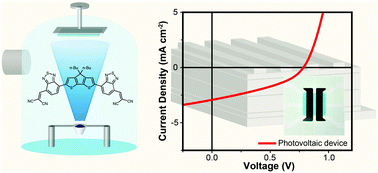Abstract
In this work, a new vacuum-processable non-fullerene acceptor CBD was designed using a D–A strategy for the first time, which exhibits a low optical bandgap of 1.41 eV, and guarantees efficient light harvesting in the visible-NIR region. The optimal CBD-based vacuum-deposited organic solar cells with a planar heterojunction architecture delivered a PCE of 0.86% with a low energy loss of 0.63 eV, which indicates the great potential of D–A-type non-fullerene acceptors for vacuum-deposited solar cells.

- This article is part of the themed collection: Special issue in honour of Daoben Zhu


 Please wait while we load your content...
Please wait while we load your content...